JAJSJE8A May 2021 – March 2022 TPS25830A-Q1 , TPS25832A-Q1
PRODUCTION DATA
- 1 特長
- 2 アプリケーション
- 3 概要
- 4 Revision History
- 5 概要 (続き)
- 6 Device Comparison Table
- 7 Pin Configuration and Functions
- 8 Specifications
- 9 Parameter Measurement Information
-
10Detailed Description
- 10.1 Overview
- 10.2 Functional Block Diagram
- 10.3
Feature Description
- 10.3.1 Buck Regulator
- 10.3.2 Enable/UVLO and Start-Up
- 10.3.3 Switching Frequency and Synchronization (RT/SYNC)
- 10.3.4 Spread-Spectrum Operation
- 10.3.5 VCC, VCC_UVLO
- 10.3.6 Minimum ON-Time, Minimum OFF-Time
- 10.3.7 Internal Compensation
- 10.3.8 Bootstrap Voltage (BOOT)
- 10.3.9 RSNS, RSET, RILIMIT and RIMON
- 10.3.10 Overcurrent and Short Circuit Protection
- 10.3.11 Overvoltage, IEC and Short to Battery Protection
- 10.3.12 Cable Compensation
- 10.3.13 USB Port Control
- 10.3.14 FAULT Response
- 10.3.15 USB Specification Overview
- 10.3.16 USB Type-C® Basics
- 10.3.17 Device Power Pins (IN, CSN/OUT, and PGND)
- 10.3.18 Thermal Shutdown
- 10.3.19 Power Wake
- 10.4 Device Functional Modes
-
11Application and Implementation
- 11.1 Application Information
- 11.2
Typical Application
- 11.2.1 Design Requirements
- 11.2.2
Detailed Design Procedure
- 11.2.2.1 Output Voltage
- 11.2.2.2 Switching Frequency
- 11.2.2.3 Inductor Selection
- 11.2.2.4 Output Capacitor Selection
- 11.2.2.5 Input Capacitor Selection
- 11.2.2.6 Bootstrap Capacitor Selection
- 11.2.2.7 VCC Capacitor Selection
- 11.2.2.8 Enable and Undervoltage Lockout Set-Point
- 11.2.2.9 Current Limit Set-Point
- 11.2.2.10 Cable Compensation Set-Point
- 11.2.2.11 LD_DET, POL, and FAULT Resistor Selection
- 11.2.3 Application Curves
- 12Power Supply Recommendations
- 13Layout
- 14Device and Documentation Support
- 15Mechanical, Packaging, and Orderable Information
パッケージ・オプション
メカニカル・データ(パッケージ|ピン)
- RHB|32
サーマルパッド・メカニカル・データ
- RHB|32
発注情報
8.8 Typical Characteristics
Unless otherwise specified the following conditions apply: VIN = 13.5 V, fSW = 400 kHz, L = 8.2 µH, COUT_CSP = 66 µF, COUT_CSN = 0.1 µF, CBUS = 1 µF, TA = 25 °C.
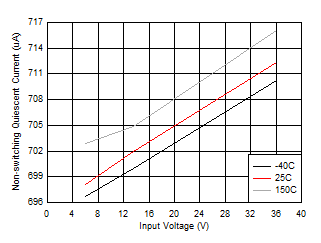
| VCSN = 8 V | CC1= Rd | ||
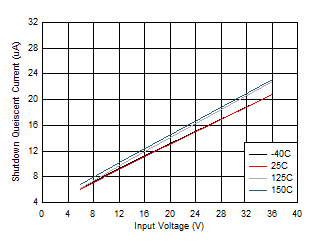
| EN = 0 V |
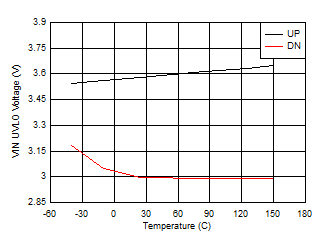
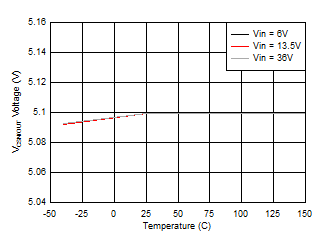
| RIMON = 0 Ω |
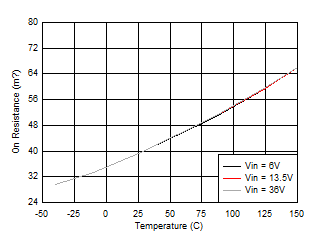
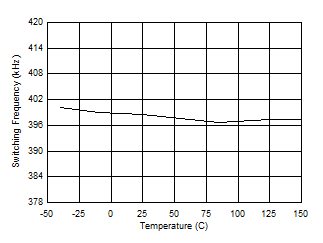
| RT = 49.9 kΩ |
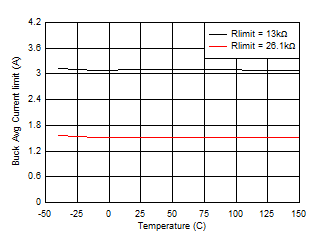
| RSNS = 15 mΩ | RSET = 300 Ω |
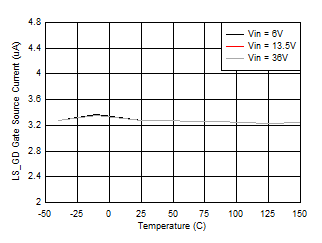
A.
Figure 8-15 LS_GD Gate Source Current vs Junction Temperature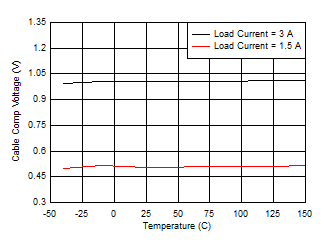
| RSNS = 15 mΩ | RSET = 300 Ω | RIMON = 13 kΩ |
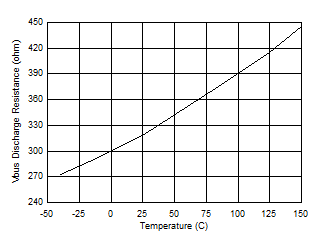
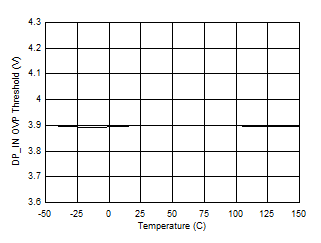
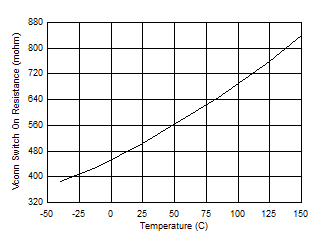
| VCONN = 5V |
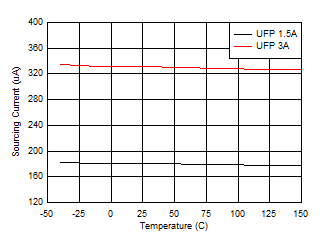
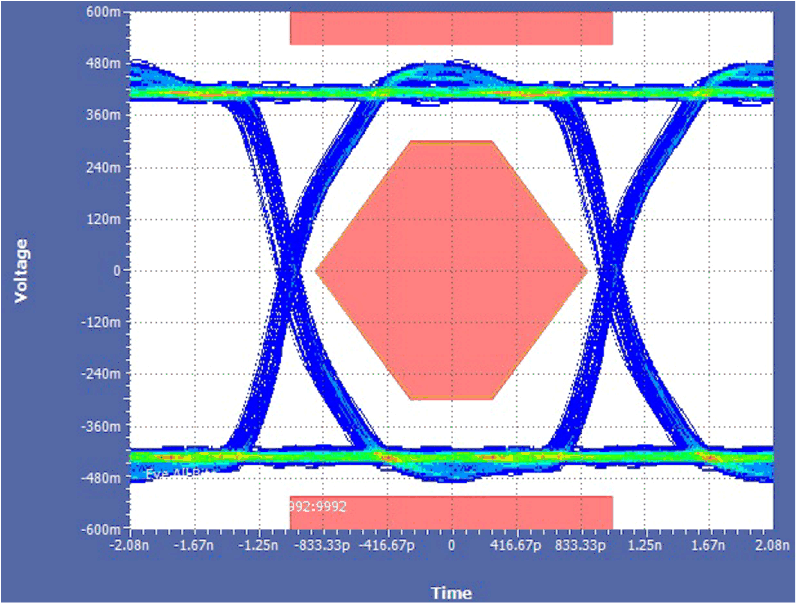
| Measured Source with 10-cm cable |
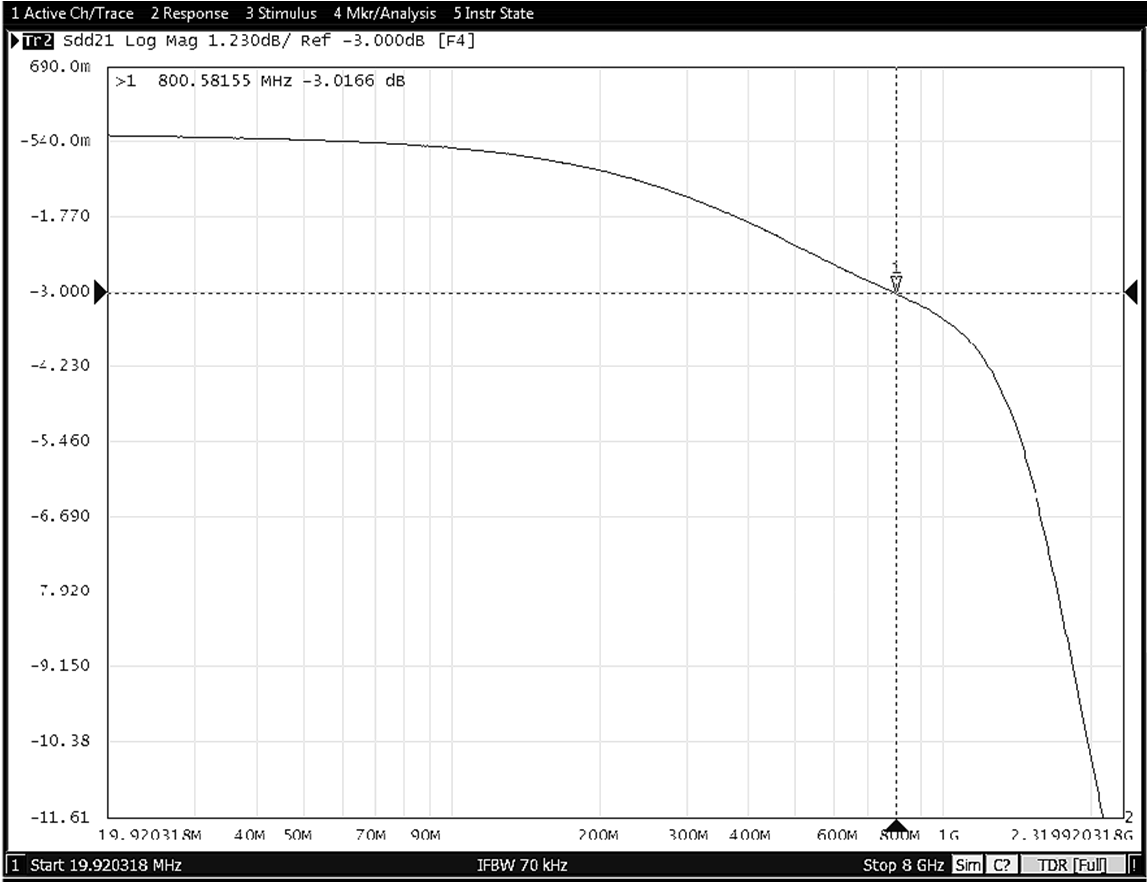
A.
Figure 8-29 Data Transmission
Characteristics vs Frequency (TPS25830A-Q1)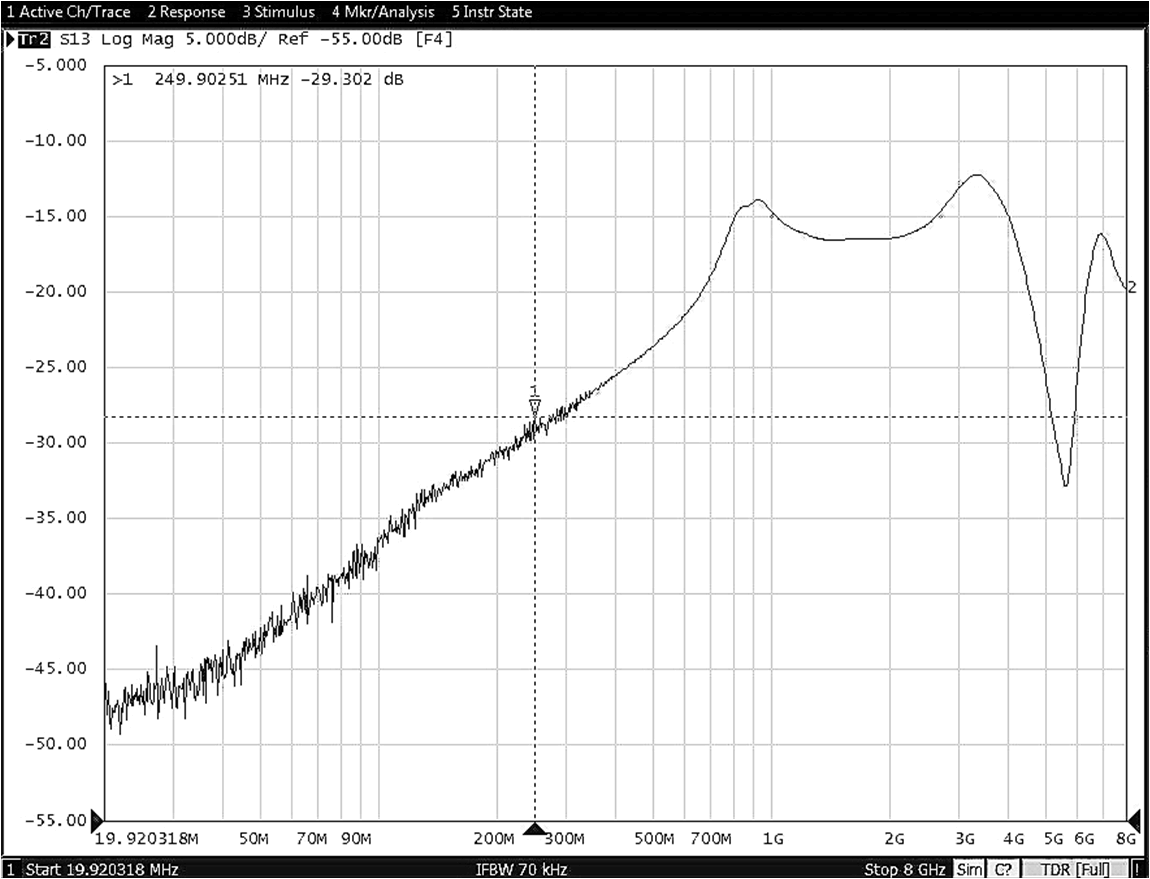
A.
Figure 8-31 On-State Cross-Channel
Isolation vs Frequency (TPS25830A-Q1)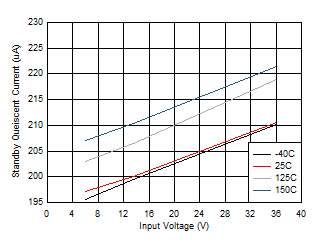
| CC1 = OPEN | CC2 = OPEN |
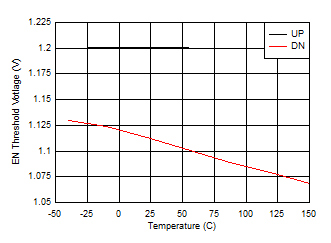
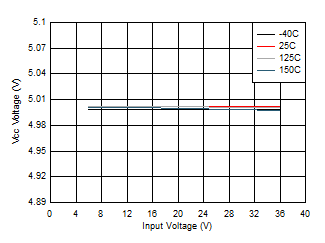
A.
Figure 8-6 VCC vs Input Voltage
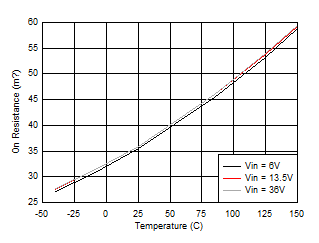
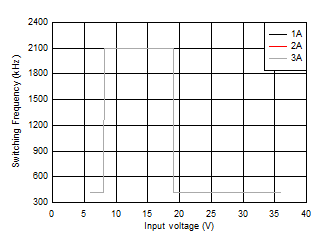
| RT = 8.66 kΩ |
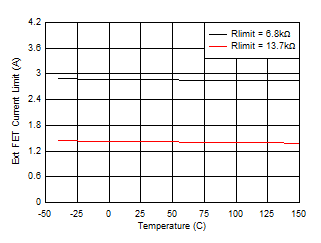
| RSNS = 15 mΩ | RSET = 300 Ω |
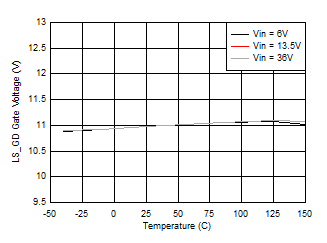
| VCSN/OUT = 5.1 V | RIMON = 0 kΩ |
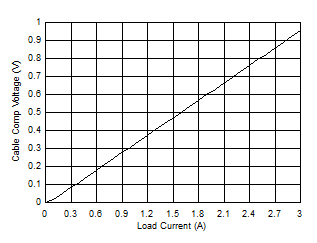
| RSNS = 15 mΩ | RSET = 300 Ω | RIMON = 13 kΩ |
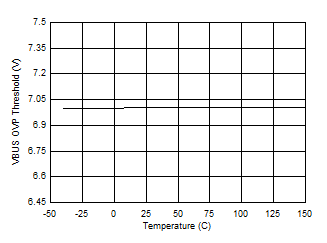
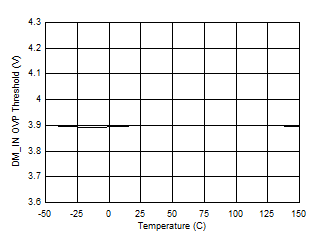
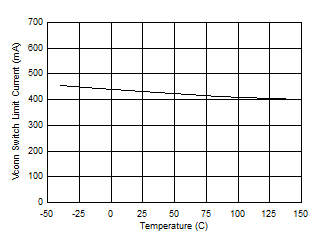
| VCONN = 5 V |
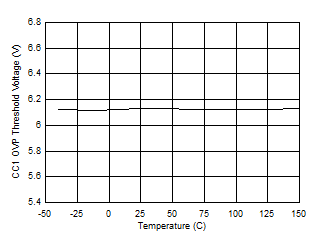
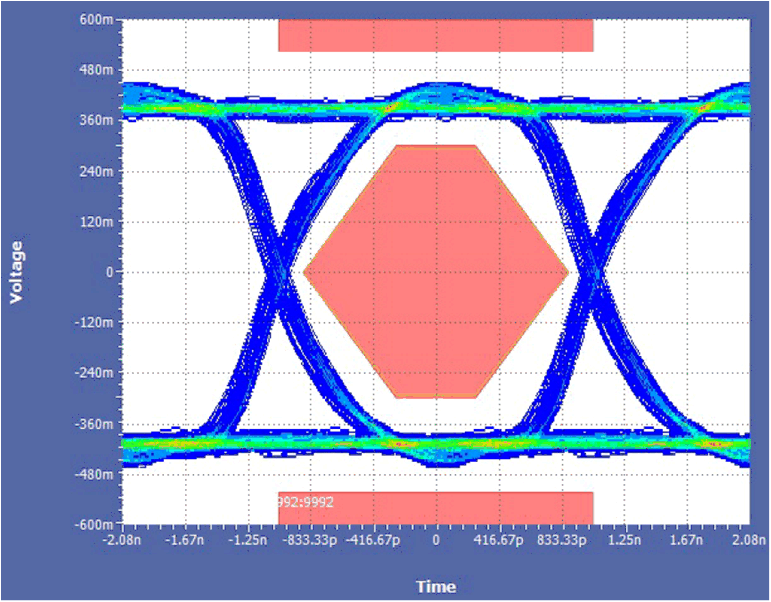
| Measured on TPS25830-Q1 EVM with 10-cm cable |
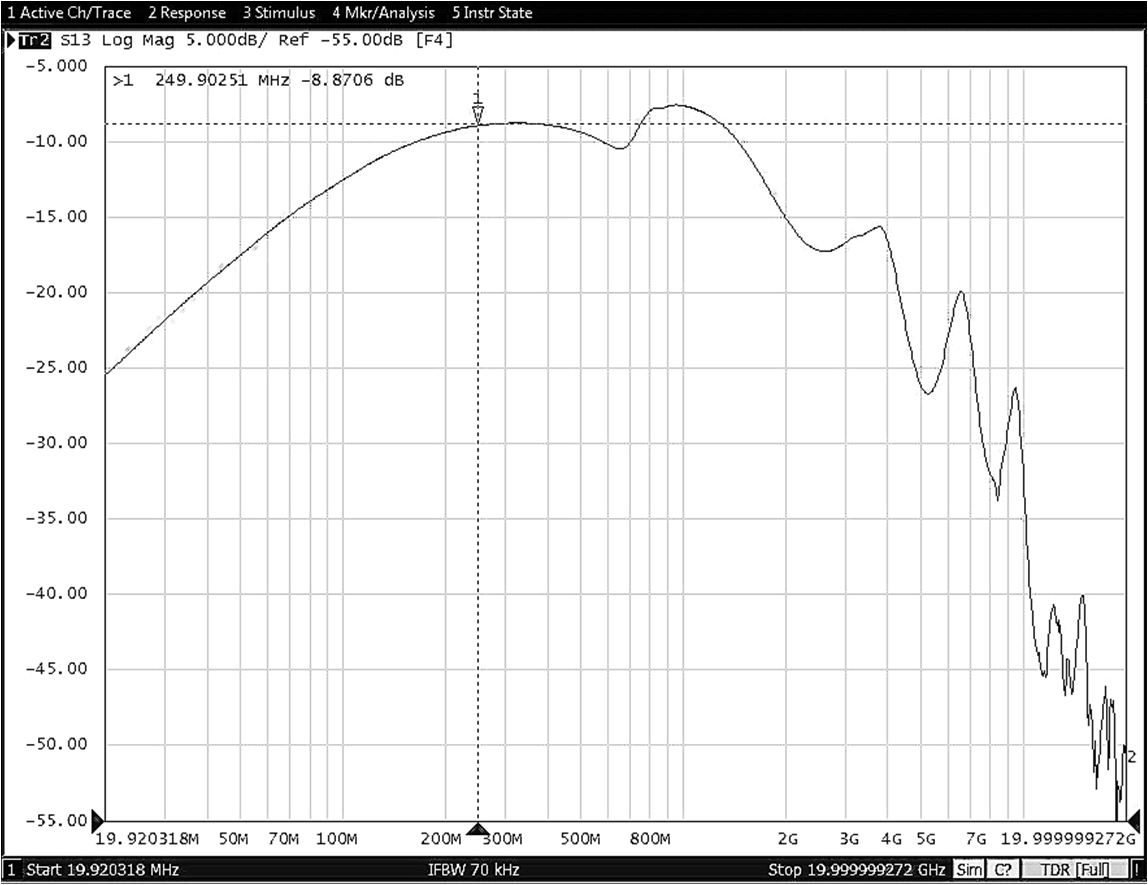
A.
Figure 8-30 Off-State Data-Switch
Isolation vs Frequency (TPS25830A-Q1)